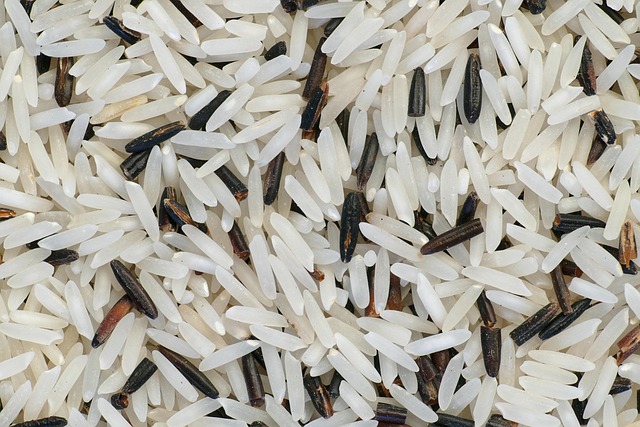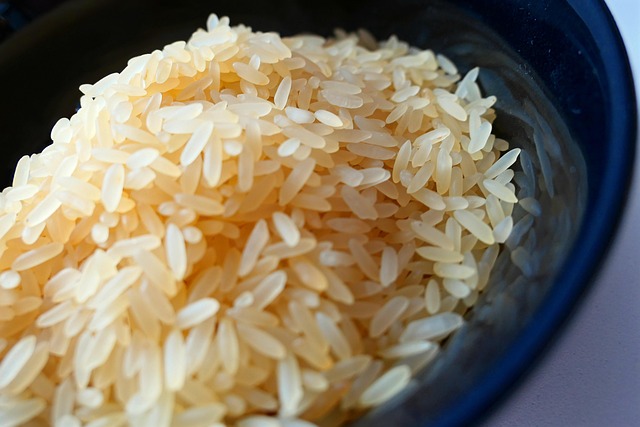
Rice nutrition facts is more than just a side dish. It’s a staple of the diet of well over half the world’s population, rooted in cultural heritage, religious tradition, and agricultural livelihood. Its past stretches back thousands of years, with origins in Asia and then spreading to several continents. From dining on sushi in Japan, risotto in Italy, or jollof rice in West Africa, rice has a predominant role at the heart of world cuisine.
Rice comes in many forms white, brown, wild, basmati, jasmine, arborio, and black rice, to name a few. Every variety of rice has its own taste, texture, and nutritional value. Rice nutrition facts help individuals choose healthy food as per their needs, whether they are looking to energize an active lifestyle, manage blood sugar, or simply savor a delectable meal.
Nutritional Profile of Rice
Macronutrients
Rice nutrition facts is mostly carbohydrates and thus a good source of energy. A cooked cup of white rice has about 45 grams of carbohydrates, 4 grams of protein, and less than 1 gram of fat. Brown rice, being less refined, has more fiber and nutrients.
Micronutrients
Rice is a good source of a number of essential vitamins and minerals:
- B Vitamins (Thiamin, Niacin, and Folate): Help with metabolism and red blood cell formation.
- Iron: Helps in the delivery of oxygen in the blood.
- Magnesium: Helps with nerve function and muscle contractions.
- Selenium and Zinc: Critical for immune function and wound healing.
Comparison of Caloric Content
| Rice Type | Calories (per 1 cup, cooked) | Fiber (g) | Protein (g) |
|---|---|---|---|
| White Rice | 205 | 0.6 | 4.3 |
| Brown Rice | 215 | 3.5 | 5.0 |
| Wild Rice | 166 | 3.0 | 6.5 |
| Black Rice | 200 | 4.9 | 5.0 |
The varying levels of calories and nutrients in rice varieties point towards the need to select that which is most suitable for your nutritional requirement.
Benefits to Health of Consume Rice
Source of Energy
Being a carbohydrate-rich food, rice yields fast and long-lasting energy. Thus, it is particularly useful for sports persons, kids, and individuals with physically demanding occupations.
Gluten-Free Alternative
Rice is naturally gluten-free, and hence it is healthy and safe for an individual with celiac disease or gluten sensitivity.
Gastrointestinal Health
Wild rice and brown rice contain high dietary fiber. Dietary fiber aids in digestion, prevents constipation, and keeps the gut microbiome balanced.
Rice Nutrition Facts and Dietary Considerations
Rice Nutrition Facts and Weight Management
Rice gets a bad rap for weight gain, but portioning is the key. Whole grain types such as black and brown rice are higher in fiber and more satiating, preventing overeating.

Glycemic Index (GI) Variation
All rice is not created equal in their impact on blood sugar. Low-GI rice types, including basmati and brown rice, lead to slower rises in blood sugar, making them ideal for diabetes-based diets.
Rice Nutrtion Facts in Cultural Diets
- Mediterranean Diet: Not a staple food, but rice does appear in foods like stuffed grape leaves.
- Asian Diets: Staple food for meals across China, Japan, India, and Southeast Asia.
- Latin American Cuisine: Arroz con pollo, rice and beans, and others.
Rice Serving and Portion Sizes
Recommended Serving Sizes
The USDA suggests:
- 1/2 cup of cooked rice as one serving.
- Differ based on individual calorie needs—children, athletes, and also physically active adults may require more.
Portion Control and Health
Too much rice nutrition facts can lead to too many calories. Pairing rice with vegetables and protein foods can keep meals in check.
Measuring Tips
- Utilize a food scale or measuring cups.
- Visual data: 1/2 cup cooked rice is roughly the size of a cupcake wrapper.
Cooking Methods and Their Impact on Nutrition
Methods of Cooking
- Boiling: Ordinary and retains the majority of the nutrients.
- Steaming: Best for nutrient retention, especially for brown rice.
- Frying: Adds calories and fat.
Impact of Added Ingredients
Adding butter, oil, or cream can significantly increase calorie content. Flavor instead using herbs, spices, or a small amount of olive oil.
Tips
- Rinse rice to remove excess starch.
- Soak brown or wild rice for better digestion.
- Substitute broth for water for added flavor without added calories.
Rice as Part of an Equilibrium Diet
Balanced Meal Balance
Rice Nutrition facts with:
- Lean Proteins: Chicken, tofu, legumes.
- Vegetables: Broccoli, carrots, spinach.
Food Pyramid/Plate Incorporation
In the USDA’s MyPlate model, rice is a part of the grains group, and a quarter of your plate should be occupied by it ideally.
Substitutes for Carb Reduction
For carb reducers:
- Employ cauliflower rice.
- Combine rice with quinoa or legumes.
Misconceptions About Rice Nutrition Facts
Myth: Rice is Always Unhealthy
Rice itself is not unhealthy; issues arise with too much serving and too many additives. Whole grain rice is full of health benefits.
Low-Carb Diet Issues
Low-carb diets might eliminate rice, but judicious consumption especially of lower-GI varieties can be fitting into most diet regimens.
Sugar and Diabetes Myths
Rice does contain carbohydrates, but eating whole grain and low-GI rice helps prevent blood sugar spikes.
Environmental Impact and Sustainability of Rice Production
Farming Practice of Rice
Standard rice cultivation requires a lot of water and has the potential to be a source of methane. But innovations like System of Rice Intensification (SRI) reduce water usage and increase output.
Nutritional Implications of Sustainability
Organic rice nutrition facts may have less pesticide contamination and slightly higher nutrient levels due to improved soil health.
Global Influence
- Asia grows most of the rice, then Africa and Latin America.
- Sustainable farming can increase rice nutritional content and availability across the globe.
Intugio e Reflexions Finays
Rice is still a part of meals around the globe for several reasons. It’s easy, cheap, and healthy when consumed sensibly. Having rice nutrition facts at hand empowers you to make healthier choices whether you’re trying to lose weight, control blood sugar levels, or just simply eating better meals.
Try other forms of rice, experiment with preparation methods, and couple it with brains to make healthy food. Myth must not deter you rice consumed moderately can be a wonderful part of a healthy and delicious diet.
Call to Action: Start adding different kinds of rice nutrition facts into your daily meals. Experiment with recipes that blend rice with nutrient-rich vegetables and proteins to reap the full benefit of this ancient grain.
